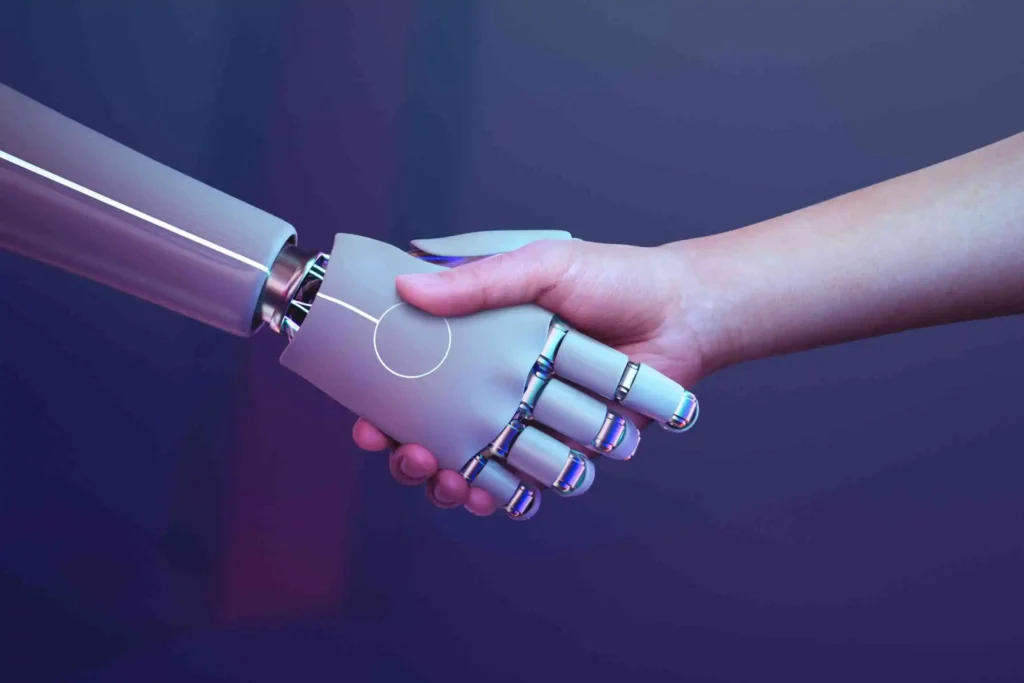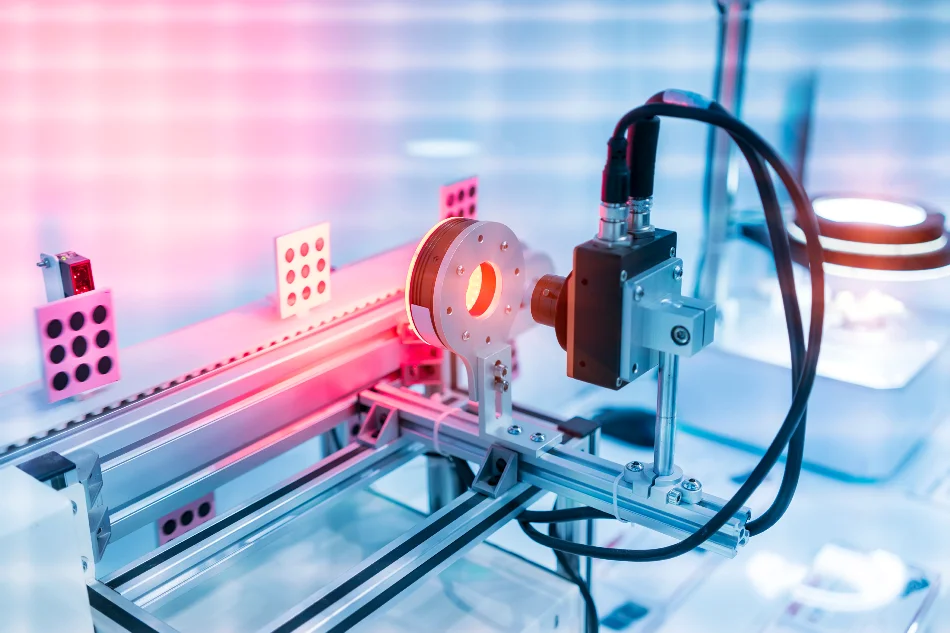Introduction
Understanding the Role of AI in Modern Manufacturing
In today’s fast-paced manufacturing landscape, quality control is more critical than ever. The integration of AI-based vision inspection systems has revolutionized the way we approach defect detection and quality assurance. But what exactly are these systems, and how are they transforming the manufacturing sector?
The Evolution of Quality Control in Manufacturing
Quality control has come a long way from manual inspections and sporadic sampling. In the past, manufacturers relied heavily on human inspectors to ensure products met quality standards. This approach, while effective to a certain extent, was prone to errors and inefficiencies. The advent of automated systems and now AI-driven technologies has paved the way for more reliable, faster, and accurate quality control processes.
What is an AI-Based Vision Inspection System?
An AI-based vision inspection system combines machine vision with artificial intelligence to automatically inspect and analyze products on the production line. These systems use cameras, sensors, and sophisticated algorithms to detect defects, ensuring that only products meeting the highest quality standards reach the customer.
The Importance of Quality Control
Why Quality Control is Crucial for Manufacturers
Quality control is not just a box-ticking exercise for manufacturers. It is a vital component that directly impacts a company’s reputation, customer satisfaction, and bottom line. Poor quality can lead to product recalls, loss of customer trust, and significant financial losses.
Reducing Defects and Waste
By identifying defects early in the production process, manufacturers can reduce waste and rework. This not only saves costs but also helps in maintaining a sustainable manufacturing process. AI-based vision inspection systems excel at spotting even the smallest defects, which might be missed by human inspectors.
Enhancing Customer Satisfaction
Quality products lead to happy customers. Consistent quality control ensures that products meet customer expectations and regulatory standards. This fosters customer loyalty and can lead to repeat business and positive word-of-mouth.
AI-Based Vision Inspection System: An Overview
How AI-Based Vision Inspection Systems Work
At its core, an AI-based vision inspection system uses cameras and sensors to capture images of products. These images are then analyzed using AI algorithms that can detect defects, measure dimensions, and check for conformity against predefined standards.
The Basics of Machine Vision
Machine vision involves the use of cameras and image processing software to perform inspections and measurements. This technology is the foundation of AI-based vision inspection systems. By capturing high-resolution images, machine vision systems can detect minute defects that are invisible to the naked eye.
Integration of AI in Vision Systems
Artificial intelligence enhances machine vision by allowing the system to learn from previous inspections and improve over time. Machine learning algorithms can identify patterns and anomalies, making the system more adept at detecting defects and predicting potential issues.
Key Components and Technologies
AI-based vision inspection systems consist of several key components, including high-resolution cameras, image processing software, and AI algorithms. These elements work together to capture and analyze images, providing real-time feedback and quality control insights.
Key Benefits of AI-Based Vision Inspection
Improved Accuracy and Precision
AI-based vision inspection systems offer unparalleled accuracy and precision. They can detect defects at a microscopic level, ensuring that products meet the highest quality standards. This level of precision is crucial in industries where even the smallest defects can have significant consequences.
Minimizing Human Error
One of the biggest advantages of AI-based vision inspection systems is their ability to minimize human error. Human inspectors can suffer from fatigue, distraction, and inconsistency, leading to missed defects. AI systems, on the other hand, provide consistent and reliable inspections, ensuring that defects are detected every time.
Ensuring Consistent Quality
Maintaining consistent quality across batches is a major challenge for manufacturers. AI-based vision inspection systems can continuously monitor production processes and ensure that quality standards are met consistently, reducing variability and enhancing product reliability.
Cost-Efficiency and Time Savings
Implementing AI-based vision inspection systems can lead to significant cost savings and time efficiency. By automating the inspection process, manufacturers can reduce the need for manual labor and speed up production lines.
Faster Production Lines
Automated inspection systems can operate at high speeds, allowing for faster production rates. This not only increases output but also helps in meeting tight deadlines and demand spikes.
Reduced Operational Costs
By identifying defects early and reducing waste, AI-based vision inspection systems can help manufacturers cut down on operational costs. They also reduce the need for costly rework and scrap, further contributing to cost efficiency.
Applications of AI-Based Vision Inspection Systems
Defect Detection in Various Industries
AI-based vision inspection systems are versatile and can be applied in various industries to detect defects and ensure quality.
Electronics and Semiconductors
In the electronics and semiconductor industries, even the smallest defect can lead to significant product failures. AI-based vision inspection systems are used to inspect circuit boards, chips, and other electronic components to ensure they meet quality standards.
Automotive Manufacturing
In the automotive industry, quality control is crucial for ensuring safety and reliability. AI-based vision inspection systems are used to inspect parts and assemblies for defects, ensuring that vehicles are built to the highest standards.
Food and Beverage Industry
In the food and beverage industry, quality control is essential for ensuring product safety and compliance with regulations. AI-based vision inspection systems can inspect packaging, labels, and products for defects, contamination, and proper sealing.
Enhancing Process Control and Automation
Beyond defect detection, AI-based vision inspection systems can enhance overall process control and automation.
Real-Time Monitoring
AI-based vision systems provide real-time monitoring of production processes, allowing manufacturers to quickly identify and address issues. This helps in maintaining optimal production conditions and reducing downtime.
Predictive Maintenance
By analyzing data from inspections, AI systems can predict when equipment is likely to fail and schedule maintenance proactively. This reduces unplanned downtime and helps in maintaining smooth production operations.
Challenges and Considerations
Implementation Challenges
Implementing AI-based vision inspection systems can be challenging, especially for manufacturers with existing production lines.
Integration with Existing Systems
Integrating new AI-based systems with existing production lines and IT infrastructure can be complex. Manufacturers need to ensure that the new systems are compatible with their existing equipment and processes.
Training and Skill Requirements
Implementing AI-based vision inspection systems requires skilled personnel who can manage and maintain these systems. Manufacturers need to invest in training and upskilling their workforce to effectively use these advanced technologies.
Ethical and Legal Considerations
Data Privacy Concerns
AI-based vision inspection systems often require the collection and processing of large amounts of data. This raises concerns about data privacy, especially if personal or sensitive information is involved. Manufacturers need to ensure that data is collected, stored, and used in compliance with data protection regulations.
Regulatory Compliance
Different industries are subject to various regulations and standards regarding quality control and data handling. Manufacturers need to ensure that their AI-based vision inspection systems comply with relevant laws and standards, such as those set by the FDA for the pharmaceutical industry or the ISO standards for manufacturing.
The Future of AI-Based Vision Inspection in Manufacturing
Emerging Trends and Technologies
The field of AI-based vision inspection is constantly evolving, with new trends and technologies emerging.
Advances in Machine Learning and AI
Advances in machine learning and AI are driving improvements in vision inspection systems. New algorithms and models are making it possible for these systems to learn more effectively and handle more complex inspection tasks. This includes the ability to detect new types of defects and anomalies that were previously difficult to identify.
Increased Adoption in Various Sectors
As the technology matures, more industries are adopting AI-based vision inspection systems. From textiles to pharmaceuticals, these systems are being used to enhance quality control and streamline production processes. The growing adoption is driven by the need for higher quality standards and the competitive advantage that comes with superior quality control.
The Road Ahead for Manufacturers
The future of manufacturing is closely tied to the adoption of advanced technologies like AI-based vision inspection systems.
Adapting to Technological Changes
Manufacturers need to be proactive in adapting to technological changes. This involves not only investing in new technologies but also ensuring that their workforce is equipped with the necessary skills to use and maintain these technologies. Companies that fail to adapt may find themselves at a competitive disadvantage.
Embracing Innovation for Competitive Advantage
Innovation is key to maintaining a competitive edge in the manufacturing industry. By embracing AI-based vision inspection systems, manufacturers can improve product quality, reduce costs, and increase efficiency. This positions them to better meet customer demands and compete in the global market.
Conclusion
The Transformative Power of AI in Quality Control
AI-based vision inspection systems are transforming quality control in manufacturing. They offer unprecedented accuracy, efficiency, and reliability, enabling manufacturers to produce high-quality products while reducing costs and waste. As the technology continues to evolve, its impact on the manufacturing industry will only grow, driving further advancements and improvements in quality control practices.
Lastly, if you are looking for a reliable implementation partner, you may as well contact Trident Information Systems. Experience the power of Trident’s Visual Intelligence Systems firsthand. Don’t miss out on the incredible benefits they bring. Contact Trident today for a demo and see how these innovative solutions can transform your business. Also, stay updated by following our LinkedIn page for more insights. Join us as we lead the way in automotive innovation.
FAQs
What industries benefit the most from AI-based vision inspection systems?
AI-based vision inspection systems are beneficial in a wide range of industries, including electronics, automotive, pharmaceuticals, food and beverage, and textiles. These systems help improve quality control by detecting defects and ensuring compliance with industry standards.
How does an AI-based vision inspection system improve product quality?
An AI-based vision inspection system improves product quality by providing precise and consistent inspections. It detects defects at a microscopic level, ensuring that only products that meet the highest quality standards reach the market. This reduces the likelihood of recalls and enhances customer satisfaction.
What are the costs associated with implementing an AI-based vision inspection system?
The costs associated with implementing an AI-based vision inspection system can vary depending on the complexity of the system and the specific requirements of the manufacturer. Initial costs include the purchase of hardware and software, as well as integration and training expenses. However, these costs are often offset by the long-term benefits of reduced waste, improved quality, and increased efficiency.
How does AI-based vision inspection contribute to sustainability?
AI-based vision inspection systems contribute to sustainability by reducing waste and improving resource efficiency. By identifying defects early, these systems minimize the need for rework and scrap, leading to a more sustainable manufacturing process. They also help manufacturers optimize their use of materials and energy, further supporting environmental sustainability.
What future advancements can we expect in AI-based vision inspection technology?
Future advancements in AI-based vision inspection technology may include improvements in machine learning algorithms, enabling systems to detect more complex defects and anomalies. We can also expect greater integration with other Industry 4.0 technologies, such as the Internet of Things (IoT) and robotics, leading to more automated and intelligent manufacturing processes.


